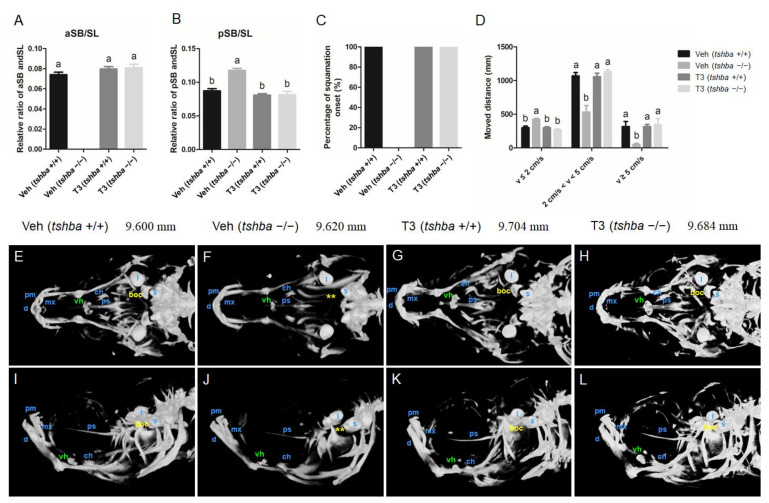Figure 4.
Larval-to-juvenile transition defects rescued by supplemental T3 treatments in tshba mutant zebrafish. (A) Relative ratios of the relative length of the aSB to the standard length (SL) of the zebrafish body at 20 dpf. (B) Relative ratios of the relative length of the posterior swim bladder (pSB) to the SL of zebrafish body at 20 dpf. (C) Percent onset of squamation in zebrafish at 32 dpf. (D) The locomotive activity of zebrafish at 30 dpf. The x-axes show the movement velocity. The swimming ability of zebrafish is shown by the moving distance with low velocity (v ≤ 2 cm/s), medium velocity (2 cm/s < v < 5 cm/s), and high velocity (v ≥ 5 cm/s). (E–H) Micro-CT scan of the craniofacial skeleton in zebrafish at 30 dpf. Dorsal view. (I–L) Micro-CT scan of the craniofacial skeleton in zebrafish at 30 dpf. Lateral view. Images not to scale. The SL of each zebrafish is presented above the panels. The basioccipital bones are labeled in yellow. The ventral hypohyals are labeled in green. Yellow asterisks indicate the bony process on the basioccipital, which did not appear in control tshba mutant zebrafish. Abbreviations: boc, basioccipital; d, dentary; l, lapillus; mx, maxilla; pm, premaxilla; ps, parasphenoid; vh, ventral hypohyals; s, sagitta. a–b, different superscripts in the same column indicate significant differences (p < 0.05).

